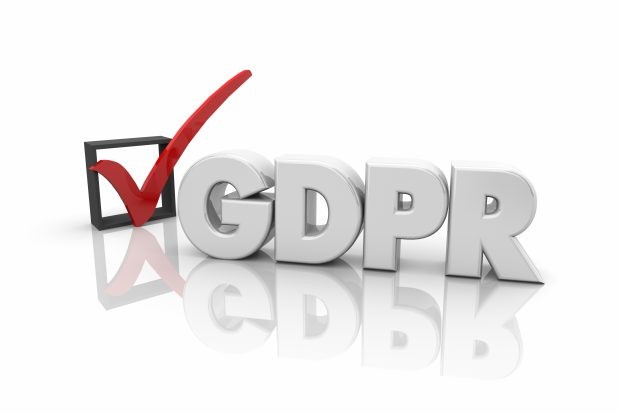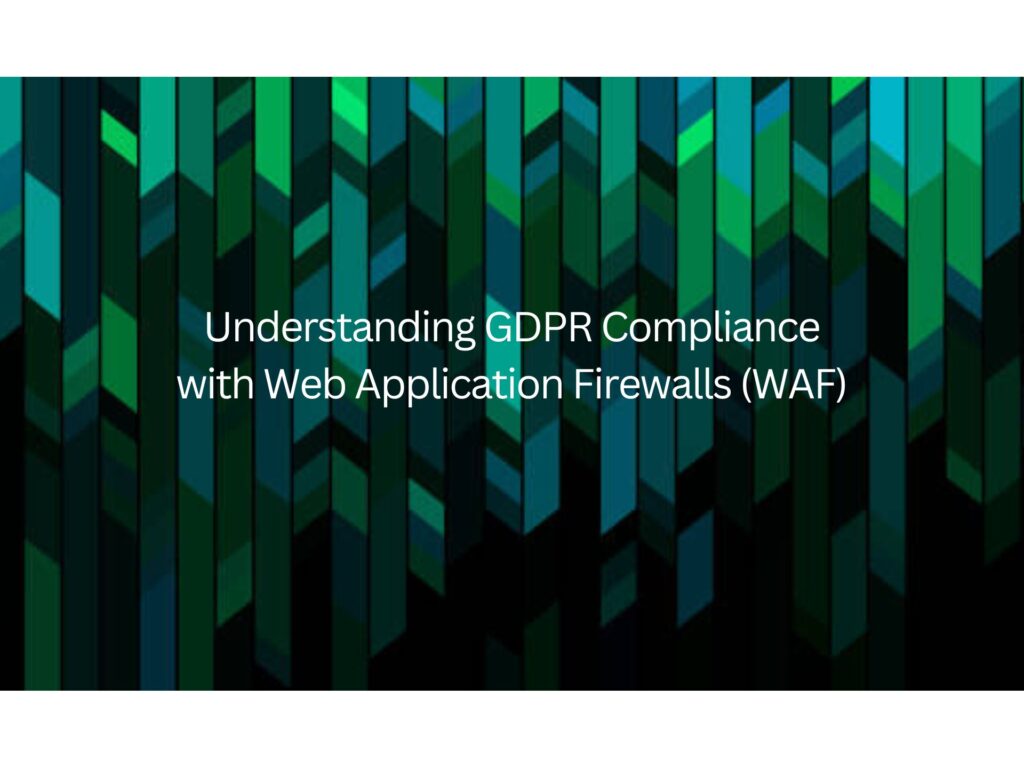In today’s digital world, ensuring cybersecurity and data protection has become a paramount endeavour for organizations across the globe. As businesses manage increasing amounts of personal data, compliance with legal frameworks such as the General Data Protection Regulation (GDPR) is crucial. A key tool in achieving GDPR compliance is the Web Application Firewall (WAF). WAFs are integral in safeguarding web applications by monitoring and filtering HTTP traffic, which, in turn, supports robust data protection strategies vital for GDPR adherence. By mitigating potential threats, WAFs help organizations fulfill GDPR obligations while maintaining the integrity and security of sensitive information.
Understanding GDPR Compliance

Overview of GDPR and its Importance
The General Data Protection Regulation (GDPR) is a comprehensive data protection law enacted by the European Union (EU) in May 2018. It was designed to harmonize data privacy laws across Europe, protect and empower all EU citizens’ data privacy, and reshape how organizations across the region approach data privacy. This regulation is pivotal as it applies to any organization, regardless of its location, that processes the personal data of EU residents. The GDPR aims to ensure that individuals have control over their personal information and that data processors adhere to strict guidelines that mandate transparency, data security, and rights for individuals.
Key Principles of GDPR Related to Data Protection
The GDPR consists of several key principles that organizations must follow in order to remain compliant. These principles include:
– Lawfulness, Fairness, and Transparency: Organizations must process personal data lawfully and transparently.
– Purpose Limitation: Personal data should be collected for specified, explicit, and legitimate purposes.
– Data Minimization: Only data that is necessary for the purposes should be collected and processed.
– Accuracy: Data must be accurate and kept up to date.
– Storage Limitation: Data should be retained only as long as necessary for the purposes.
– Integrity and Confidentiality: Data should be processed in a manner that ensures security, including protection against unauthorized or unlawful processing and accidental loss, destruction, or damage.
Impact of Non-Compliance on Businesses
Failure to comply with GDPR can lead to severe consequences for businesses. Non-compliant organizations can face hefty fines—up to 4% of annual global turnover or €20 million, whichever is greater. Beyond financial penalties, businesses may also suffer reputational damage, loss of consumer trust, and legal challenges. Therefore, adhering to GDPR is not only a legal obligation but a critical component of sustainable business operations.
Web Application Firewalls (WAF) Explained
Definition and Purpose of WAFs
A Web Application Firewall (WAF) is a security tool that monitors, filters, and blocks HTTP/S traffic to and from a web application. Its primary purpose is to protect web applications by detecting and preventing attacks that exploit vulnerabilities. WAFs serve as a protective shield, guarding organizations against common threats such as SQL injection, cross-site scripting (XSS), and malware infections.
How WAFs Protect Web Applications
WAFs help protect web applications through a set of rules designed to identify and filter out threats that could compromise data integrity, availability, and confidentiality. These rules aim to mitigate risks by examining incoming and outgoing traffic, detecting suspicious activities, and blocking potential attacks before they reach the web application. By operating at the application layer, WAFs offer deep packet inspection and actionable insights to effectively thwart malicious activities.
Types of WAF Deployment
Organizations can deploy Web Application Firewalls in various formats, depending on their specific requirements:
– Cloud-based WAFs: These are managed by third-party service providers and offer scalability, reduced maintenance, and ease of deployment. They are ideal for organizations seeking a cost-effective solution with minimal infrastructure overhead.
– On-premise WAFs: Installed on an organization’s local infrastructure, these offer in-depth customization and control, making them suitable for enterprises with specific security and compliance needs.
– Hybrid WAFs: These combine elements of both cloud and on-premise solutions, providing the flexibility of cloud deployment with the control of on-premise systems. This model is particularly beneficial for organizations that require both scalability and specific security configurations.
Understanding and leveraging the capabilities of Web Application Firewalls can significantly contribute to an organization’s overall cybersecurity strategy, particularly when striving to achieve GDPR compliance.
How WAFs Enhance GDPR Compliance
Protecting Personal Data from Unauthorized Access
Web Application Firewalls (WAFs) play a crucial role in safeguarding personal data from unauthorized access, thereby supporting organizations in achieving GDPR compliance. A WAF acts as a barrier between web applications and potential cyber threats. By analyzing incoming traffic, a WAF can identify and prevent unauthorized attempts to access sensitive personal data, ensuring that only legitimate traffic is allowed through. This line of defense is vital in preventing data breaches, as it effectively reduces the likelihood of external actors gaining unauthorized access to confidential information.
Detecting and Mitigating Data Breach Risks
WAFs are instrumental in detecting and mitigating data breach risks, which are paramount under GDPR regulations. Through advanced threat detection capabilities, WAFs can identify malicious activities and anomalies that may indicate a data breach is either occurring or impending. Once detected, a WAF can automatically block suspicious activity or alert security teams for further investigation. By providing real-time protection and response, WAFs help organizations minimize the likelihood and impact of data breaches, ensuring they remain in compliance with GDPR’s stringent data protection requirements.
Logging and Monitoring for GDPR Audit Requirements
GDPR compliance necessitates that organizations maintain comprehensive logging and monitoring capabilities to demonstrate adherence to data protection protocols. WAFs facilitate this by providing detailed logs of all traffic and security-related events. These logs can be essential during audits, as they offer evidence of proactive monitoring and security measures in place. By maintaining a robust logging and monitoring system, organizations can demonstrate to regulators that they have the necessary safeguards to protect personal data and respond effectively to potential security incidents.
Best Practices for Implementing WAFs for GDPR Compliance

Conducting a Risk Assessment
Implementing a WAF as part of a GDPR compliance strategy begins with conducting a thorough risk assessment. This involves evaluating the organization’s specific vulnerabilities and the types of personal data it processes. By understanding these risks, organizations can tailor their WAF deployment to address the most critical threats, thus ensuring maximum protection of personal data.
Customizing WAF Rules to Fit GDPR Needs
It is essential to customize WAF rules to align with GDPR needs and the specific requirements of the organization. This customization involves setting rules that reflect the organizational data protection policies, including only allowing necessary traffic to access web applications and blocking potentially harmful requests. Tailoring the WAF ensures that it addresses the unique data protection challenges faced by the organization, thereby reinforcing GDPR compliance efforts.
Continuous Monitoring and Incident Response Planning
To maintain GDPR compliance, continuous monitoring and incident response planning must complement the WAF. Organizations should establish routine monitoring of WAF activity and ensure that security teams are prepared to respond quickly to incidents. This planning integral to GDPR compliance allows for prompt mitigation of identified threats and provides the necessary documentation to illustrate compliance during audits. Continuous vigilance ensures that security controls remain effective in the dynamic threat landscape.
Conclusion
In conclusion, compliance with the General Data Protection Regulation (GDPR) remains paramount for businesses operating within Europe or handling the personal data of European citizens. Web Application Firewalls (WAFs) serve as a crucial component in the broader framework of data protection, ensuring robust security measures are in place.
By implementing a WAF, organizations can effectively mitigate risks, block illegal data access, and maintain the integrity of sensitive information. Alongside compliance benefits, WAFs enhance overall cybersecurity by:
– Protecting web applications against common vulnerabilities, such as SQL injection and cross-site scripting.
– Monitoring and filtering HTTP traffic to detect and prevent attacks.
– Offering real-time insights into potential security threats.
Thus, a WAF not only aids in meeting GDPR compliance but also fortifies an organization’s defence against ever-evolving cyber threats. By integrating WAFs into their cybersecurity strategy, businesses can foster trust among customers, safeguarding both privacy and reputation.




